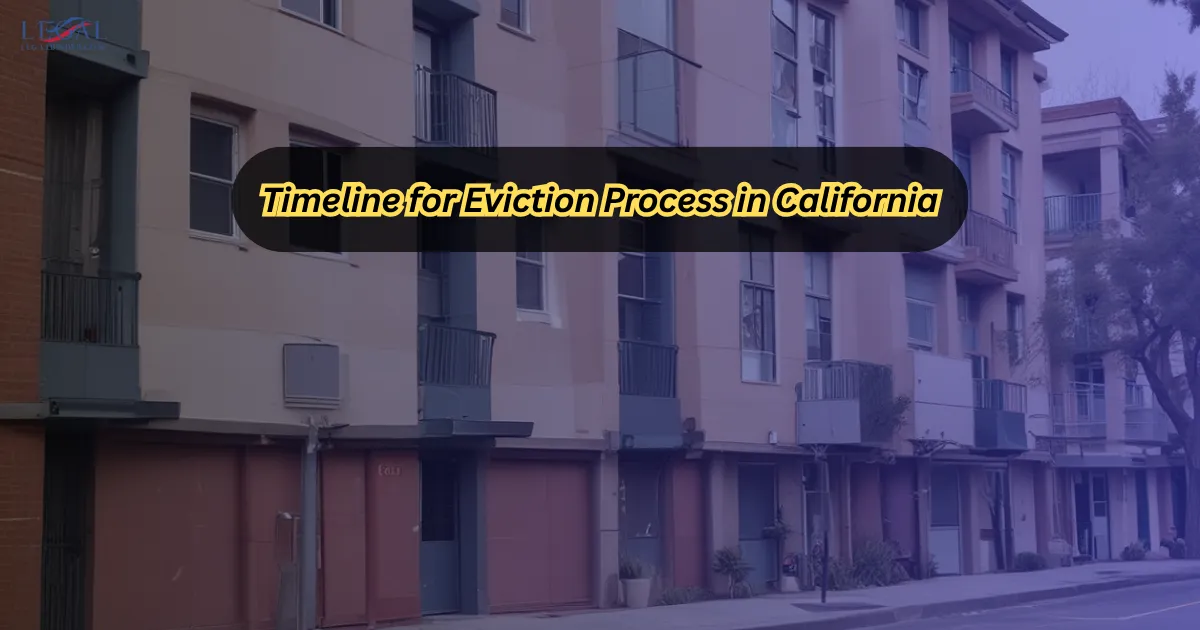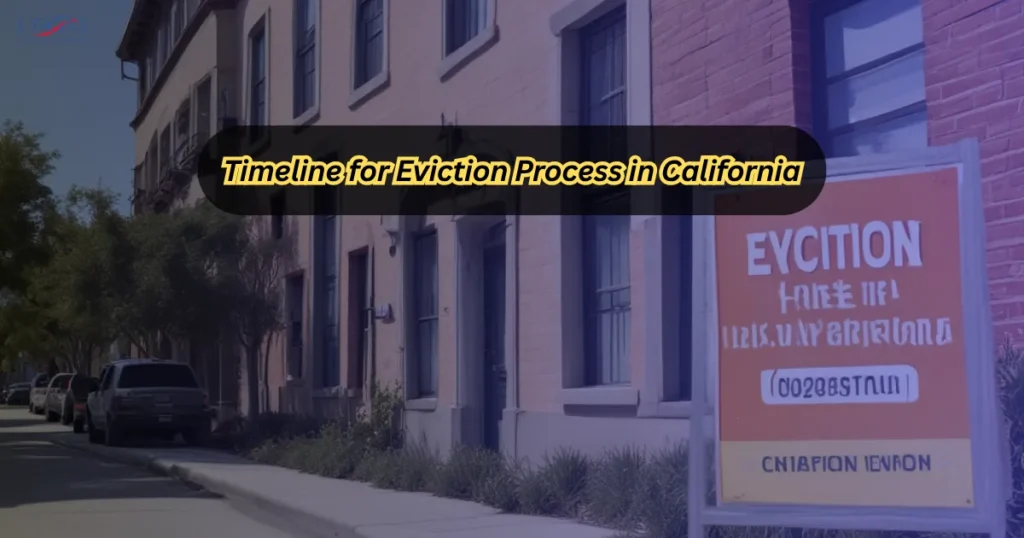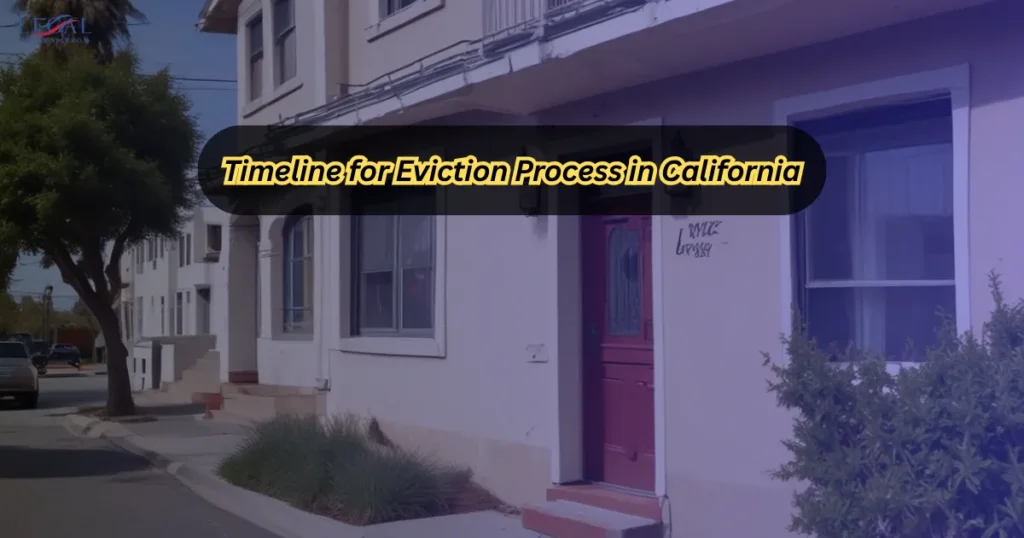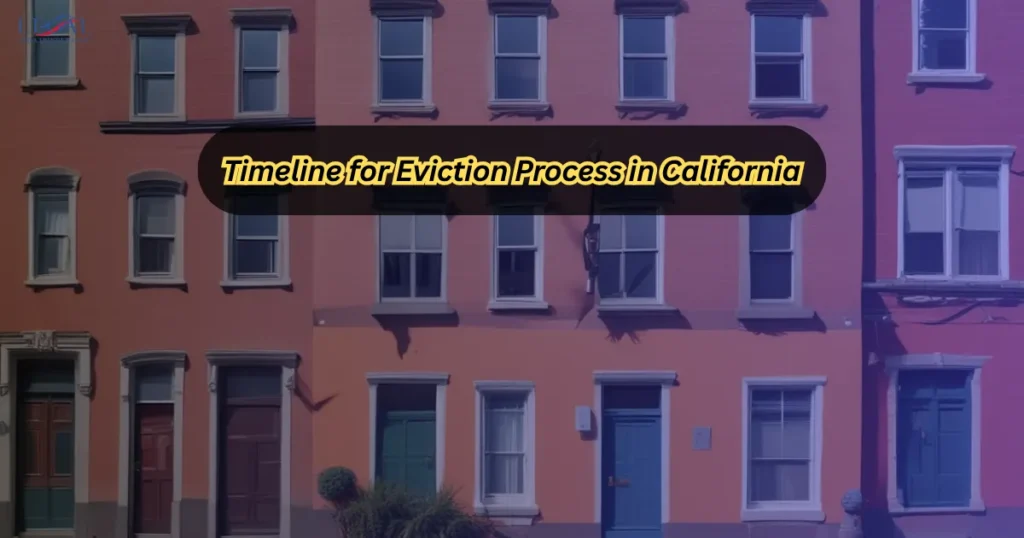Physical Address
304 North Cardinal St.
Dorchester Center, MA 02124
Physical Address
304 North Cardinal St.
Dorchester Center, MA 02124

Timeline for eviction process in California is not just a set of dates and deadlines—it’s a strict legal path that landlords must follow and tenants should understand to protect their rights. Every step, from serving an initial notice to regaining possession of the property, comes with precise requirements under California law. Understanding this timeline helps landlords avoid legal setbacks and empowers tenants to respond effectively within their rights.

Imagine this: you’re a landlord dealing with months of unpaid rent or a tenant violating key lease terms. You decide eviction is the only option but quickly realize California’s eviction process is not instantaneous—it’s a series of legally defined steps that could take weeks or even months depending on circumstances. Missing a single deadline or service requirement can force you to start over, costing time and money. As a tenant, knowing the timeline can help you prepare, negotiate, or contest an unlawful eviction. This guide lays out each stage so you can approach the process with clarity and confidence.
For more landlord-tenant legal resources and eviction templates, visit our homepage or check our California Eviction Law Resource Hub.
Evictions in California are governed by the California Civil Code, the Code of Civil Procedure, and, in many areas, local rent control and “just cause” ordinances. Following this timeline ensures compliance and avoids wrongful eviction claims.

The clock starts when the notice is legally served. Days are counted as full calendar days, excluding the day of service. Weekends and holidays are included unless the last day falls on one—in that case, it rolls to the next business day.
| Stage | Timeline |
|---|---|
| Notice Period | 3–60 days depending on notice type |
| Filing to Service | 1–5 days |
| Response Period | 5 days |
| Trial | 20 days or less after response |
| Sheriff Lockout | 5 days after writ of possession |

How fast can an eviction happen in California?Under ideal conditions, as quickly as 30 days for certain notices, but litigation can extend this considerably.Can local laws make evictions take longer?Yes, rent control and “just cause” ordinances often require extended timelines or additional steps.What if the tenant moves out during the process?The case can be dismissed, but landlord may claim unpaid rent or damages separately.Is the eviction timeline the same for all violations?No, it depends on the type of notice served and nature of the violation.
Knowing the timeline for eviction process in California helps both landlords and tenants prepare and respond appropriately. Landlords can avoid costly mistakes by following legal requirements to the letter, while tenants can protect their rights by acting within statutory deadlines. Understanding each step—from notice to lockout—ensures a smoother, fairer resolution.
Eviction is a serious legal action. If you’re a landlord, treat it as a final resort after attempts to resolve issues. If you’re a tenant, engage quickly if you face eviction to explore your options.
For more California eviction guides, landlord compliance checklists, and tenant defense tips, visit our home page now.